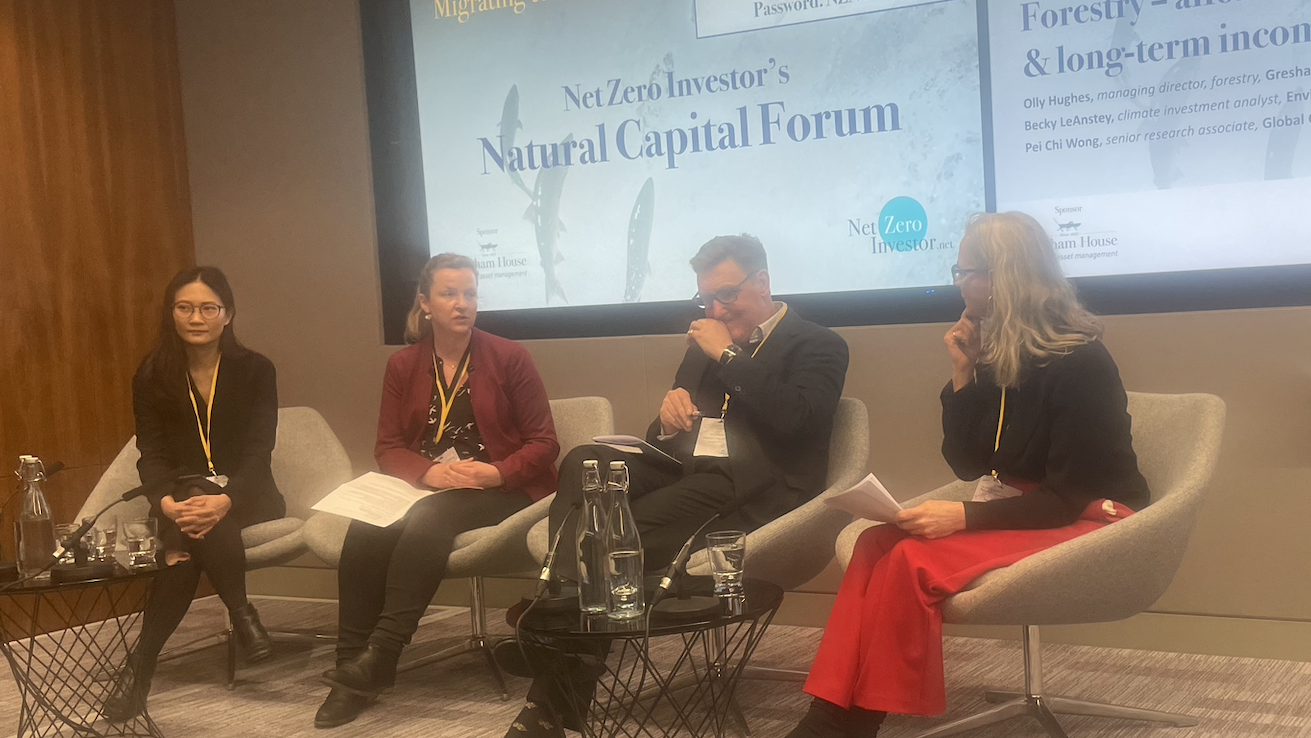
Can sustainable timber help forestry industry to overcome negative reputation?
Industry insiders at Net Zero Investor’s inaugural Natural Capital conference in London discussed carbon credits and long-term income
The forestry industry needs to overcome a negative reputation and can thrive while underpinned by sustainability credentials, according to a major asset manager within the sector.
Olly Hughes, managing director for forestry at asset managers Gresham House, said this week that “there has previously been feeling that forestry is bad for the world. We feel that if it managed sensibly and carefully, it can be very positive."
He stressed that "we do need sustainable timber production, that is absolutely key for our future. When that demand leads to an imbalance with supply it also creates a very healthy investment opportunity.”
Hughes made the comments at Net Zero Investor’s inaugural Natural Capital conference, during a panel discussion on forestry, namely the creation of new forests, carbon credits and long-term income.
Forestry credits have recently been the subject of intense scrutiny and criticism, with a media expose on the matter calling out more than 90% of Verra rainforest carbon credits, owned by the likes of Gucci and Disney, as “essentially worthless”.
On the issue, Hughes said: “We are making sure when we are looking at carbon credits that we are using the highest possible standard it is available to us, but the problem is there are so many different standards that you can verify under. So I think it's a tricky area.
“There's still a lot of debate on additionality, for example. But I hope if we can bring together a more concerted effort to make sure that we're relying upon standards and single standards that we will we'll be able to have more faith in the process.”
Becky LeAnstey, climate investment analyst at the Environment Agency Pension Fund, spoke of how a recent forestry investment in South America was the hardest venture to get through committee, with concerns over reputational risk leading to high amount of due diligence.
“It's very easy for your committee members to sit there Googling all the negative things that can actually go wrong with that sort of investment”, said LeAnstey, referencing cases of illegal deforestation, mistreatment of biodiversity, and coverups of the issue that have occurred on the continent.
Pei Chi Wong, senior research associate at Global Canopy, also referenced research from the organisation which showed that £300 billion of UK pension money is invested in companies and financial institutions that drive tropical deforestation.
We do need sustainable timber production, that is absolutely key for our future.
Timber as construction resource
Also at the event, Joe Giddings, UK networks lead for Built by Nature, a fund committed to accelerating timber building in Europe, spoke on the role for timber and other biobased materials in dramatically reducing carbon emissions from construction, and the potential for these materials to store significant volumes of carbon.
In examples of large timber construction projects already underway in the real estate sector, Giddings pointed to Timber Square in Southwark, London, a £195 million commercial build due to be completed in 2025, and Trummens Strand, a lakeside housing project in Sweden completed in 2020.
“Timber has such a huge potential for decarbonizing construction. Concrete, steel and other traditional materials that we use to create buildings contribute a huge amount to carbon footprints in the UK and globally”, said Giddings.
Last month, Net Zero Investor investigated how to finance nature-based solutions to climate change, including through commodities such as timber.
The event was closed by a speech from the afternoon’s moderator, Tessa Younger, stewardship lead at the CCLA, who quoted Scottish environmentalist John Muir; “When one tugs at a single thing in nature, he finds it attached to the rest of the world.”




